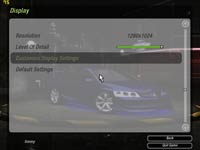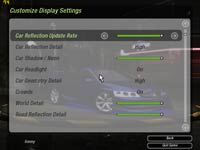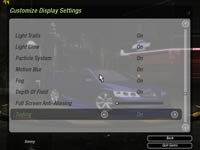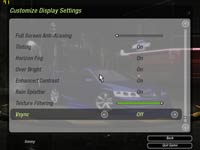7800 GTX Extreme Edition Head-to-Head
October 20, 2005 | 11:04

NFS: Underground 2
Publisher: Electronic ArtsWe used Need For Speed: Underground 2 to represent a typical driving simulator - it's based on the DirectX 9.0 API, and makes use of many DirectX 9.0 features, including motion blur and light trails. Anti-Aliasing was controlled from inside the game, while Anisotropic Filtering was controlled via the driver control panel.
We used a 3-lap race on the "Parkade Track 1" Street-X circuit with three opponents for our manual run through. The circuit is fairly high-speed, but contains lots of corners, which makes good use of motion blur and light trails.
Below is a table of the best-playable settings that we found best for each video card configuration. In this title, we found that a 30 frames per second minimum and a target of 38 frames per second (or higher) for the average frame rate delivered smooth and fluid game play.

All three overclocked 7800 GTX's delivered a minimum frame rate above 30 frames per second, with both the XFX and Leadtek Extreme Editions attaining a 32 frames per second minimum - a single frame per second ahead of Gainward's Golden Sample GTX. However, we found that the Gainward 7800 GTX delivered a higher average frame rate that was closer to the average frame rate delivered by the XFX Extreme Gamer Edition.
With the reference 7800 GTX, we had to lower the transparency Anti-Aliasing detail from supersampled to multisampled in order to keep the minimum frame rate above 30 frames per second. The differences in image quality was small and not hugely noticeable, as NFS: Underground 2 doesn't extensively use of transparent alpha textures.

MSI MPG Velox 100R Chassis Review
October 14 2021 | 15:04









Want to comment? Please log in.